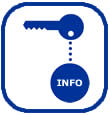 Research References - Content, Process, Product Differentiation
Research References - Content, Process, Product Differentiation
- Responding to Students Learning Needs
- Content Differentiation
- Process Differentiation
- Product Differentiation
Responding to Students’ Learning Needs Through Curriculum Differentiation
Research shows that the most effective teachers adapt assignments to meet the needs of their students and find ways to challenge their students while enabling them to be successful (George, 2005; Stronge, 2002). Differentiation draws upon a wide range of theories and practices (Hall, 2002). According to Villa and Thousand, traditional educational programs initially selected content, as well as instructional and evaluation strategies, without taking into account students’ unique characteristics. Teachers were expected to make adjustments in response to any subsequent mismatch between what learners could do and the curriculum’s demands. By contrast, teachers employing “the universal design framework consider the students and their various learning styles first. Then they differentiate curriculum content, processes, and products before delivering instruction” (2003, p. 22).
Students enter the classroom with a variety of abilities and interests, requiring that teachers employ a variety of learning options (Keefe & Jenkins, 2005; Yatvin, 2004). Because of the variance among prior knowledge and skills among learners, Slavkin (2004) and McTigue and Brown (2005) suggest that responsive schools should adopt curricula that focus on individual skill building. Differentiation involves modifications in content, process, and product based upon the needs of the student (Auld et al., 2000). Langer (2004) concluded that excellent schools flexibly use an array of teaching techniques, that consider students’ needs, rather than relying excessively on one method.
Content Differentiation
Tomlinson & Demirsky Allan (2000) explain that content consists of “facts, concepts, generalizations or principles, attitudes, and skills related to the subject, as well as materials that represent those elements. Content includes both what the teacher plans for students to learn and how the student gains access to the desired knowledge, understanding, and skills” (p. 7). Teacher use of content organizers enhances at least short-term retention (Boon et al., 2005).
Research shows training students to use graphic organizers such as mind maps, vee diagrams, Venn diagrams, causal chains, time lines, and flow charts can aid in meaningful learning in a variety of content areas and across grade levels (Lee & Nelson, 2005; Marzano, Pickering & Pollock, 2001; Ritchie & Volkl, 2000; Silverman, 2002).
The following resources to develop lesson plans, learning activities and learning materials for teaching students how to read these visuals:
- Create your own Venn diagram
- Creating and using timelines
- Concept Mapping
- Lesson plan for creating concept/mind maps
- Lesson plan - choosing the President's cabinet - good lesson plan that includes/uses a flow chart to demonstrate the process of choosing cabinet members.
Process Differentiation
Tomlinson & Demirsky Allan explain that process differentiation revolves around “how the learner comes to make sense of, understand, and ‘own’ the key facts, concepts, generalizations, and skills of the subject. An effective activity or task generally involves students in using an essential skill to come to understand an essential idea, and is clearly focused on a learning goal” (2000, p. 8).
In addition, the mind remembers best with a mnemonic device—a memory trick using a repetitive pattern or association (Carney & Levin, 2003). Thus, mnemonics can serve as a helpful 'process differentiation' tool. It is thought that mnemonics increase the availability of multiple cues that involve both images and verbal association (Carney & Levin, 2000). That is why songs, rhymes, and mottoes are easy to remember. They are hooks for the memory to hang its hat on. A saying such as “spring forward, fall back” is an easy way to remember when to move the clock ahead and when to move the clock back. Moreover, the use of visual mnemonics in instruction results in higher short-term and delayed recall of content and enhances analogical thinking (Carney & Levin, 2000).
Product Differentiation
Tomlinson & Demirsky Allan explain that “a good product causes students to rethink what they have learned, apply what they can do, extend their understanding and skill, and become involved in both critical and creative thinking” (2000, p. 9).
Also, project-based instruction has been incorporated across curricular areas and grade levels as a structure to promote hands-on problem-solving skills (Newell, 2003). J. H. Helm suggests that “Project work that captures students’ curiosity motivates them to learn emerging academic skills, such as decoding, getting meaning from text, writing words, creating diagrams, and counting” (2004, p. 61).
